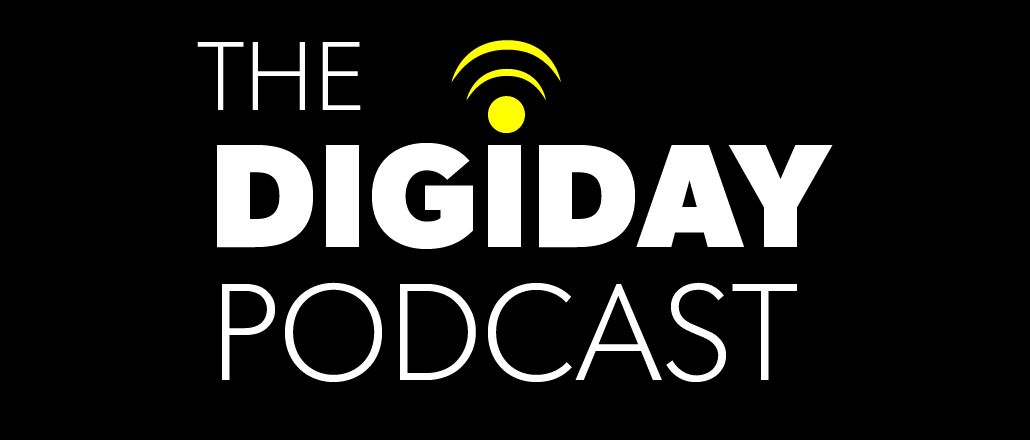Why ad tech is: A) too complicated; and B) going to get more complicated

There are over 2,500 companies on the many advertising- and marketing-tech industry landscape slides produced by investment bank Luma Partners, from display to search to video to native. Yet Luma’s own analysis is that little more than one in 20 will likely exit for more than $75 million.
You’d think that means the collapse of the ad-tech bubble. You’d be wrong. A separate Luma analysis found that for every one company that is consolidated, another 1.5 are spawned. Yes, the landscape is horribly complicated, with many downsides for brands and agencies, but that doesn’t mean anything’s going to change anytime soon, according to Luma CEO Terry Kawaja, who spoke to Digiday editor-in-chief Brian Morrissey and platforms editor John McDermott in this week’s Digiday Podcast.
“We’ve seen a period of time over the last 10 years where companies got ample funding and most of the business models in advertising technology have been fueled by a media model,” Kawaja said. “When you do that it’s easy to garner share and spend, therefore the perceived growth of your company is very fast. Companies go from zero to five to 10 to 20 to $50 million in revenue with a fair degree of ease.”
Here are some excerpts from the 25-minute conversation with Kawaja. Subscribe for future episodes, published weekly, at iTunes.
Few ad tech companies will amount to much.
Luma has to determine where to spend its time and focus its attention. In a strategic planning process completed in November, it found only a fraction of the many companies in advertising and marketing technology warranted Luma attention. It drew the line at companies likely to be bought at $75 million or more. Only 148 made the cut, or less than 6 percent of the companies analyzed.
“That was surprising to us,” Kawaja said.
Consolidation never happens.
In the six years Luma has been creating landscape slides, it has analyzed the growth and consolidation of the industry. While companies get bought, more get created. If there are 50 deals in a year, 75 new ones emerge.
“A function of that is innovation and the ease of company formation. We’re always going to see new companies. It never does consolidate, which I suppose for our own selfish reasons is a good thing.”
Fragmentation is real and it has a cost.
Much is made of the complexity of ad tech, yet at the same time clamor for more innovation in how ads are bought and sold. At some point complexity is the price that the industry pays for moving forward from inefficient processes. But fragmentation is real; it is not something ginned up. The Lumascapes, after all, merely “graphically represent” the reality of ad tech — and try to make better sense of it. The growth in logos is a symptom.
“That’s a massive amount of fragmentation that’s hard for almost anyone: investor, potential business partner, certainly acquirer to make sense of.”
“Ask anyone in the ad ops groups or at the agency level and they’ll tell you it’s just too complicated. It’s a function of the gestation of where we are in innovation vs the consolidation side. A more mature industry would like to see these as solution sets that are brought together rather than stitched together.”
Google’s actually playing nice.
Ever since Google bought DoubleClick in 2007, there’s been a fear of Google acting as tech supplier and the largest seller of media. There was even an “anything but Google” movement, Kawaja noted. And yet, for the most part, Google has straddled the line well.
“I actually think Google has done a good job to date of church and state separation.”
Facebook’s going for big brand dollars.
Google made its move in ad tech, starting with the purchase of DoubleClick, when the fight in Web advertising was over direct response budgets. Facebook, starting later, is taking a different approach: It wants brand money.
“Where Facebook is going is as a brand marketing platform. Google has historically usurped a lot of the bottom-of-the-funnel ad spend. Where Facebook is going with its native posts and autoplay video is after those TV dollars.”
New buyers are emerging in ad tech.
As ad tech matures, there will be several scaled networks, such as the enterprise resource planning space in the 1980s. There were hundreds of vendors; now there are five. In ad tech, new buyers are emerging in areas like e-commerce and telecommunications. In 2008, Luma found that over 50 percent of buying took place by five companies. Today, there are at multiple potential buyers in at least 10 categories that are on the prowl, Kawaja said.
“The buyer pool has never been broader and deeper.”
…..
Email us with comments, questions and suggestions at podcast@digiday.com.
Subscribe: iTunes | RSS | Soundcloud
Sponsored by Bionic Advertising Systems
Intro music: Benny Reiner
More in Media

Publishers revamp their newsletter offerings to engage audiences amid threat of AI and declining referral traffic
Publishers like Axios, Eater, the Guardian, theSkimm and Snopes are either growing or revamping their newsletter offerings to engage audiences as a wave of generative AI advancements increases the need for original content and referral traffic declines push publishers to find alternative ways to reach readers.

The Guardian US is starting its pursuit of political ad dollars
The Guardian US is entering the race for political ad dollars.

How much is Possible’s future in Michael Kassan’s hands?
Some people in the know at Possible said they see the conference taking a bite out of Cannes’ attendance, most acutely by U.S.-based marketers who could save money by staying on this side of the Atlantic.





